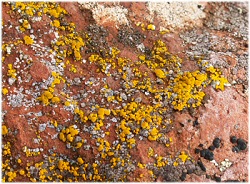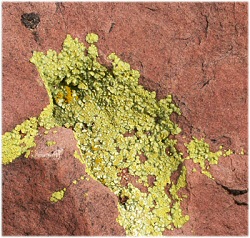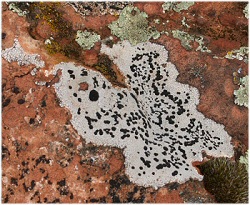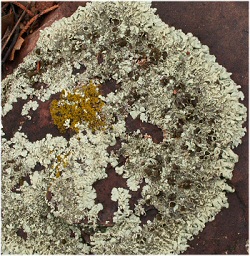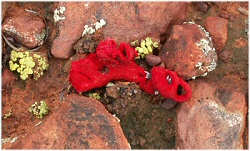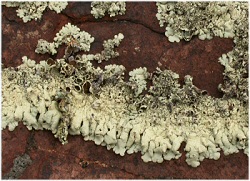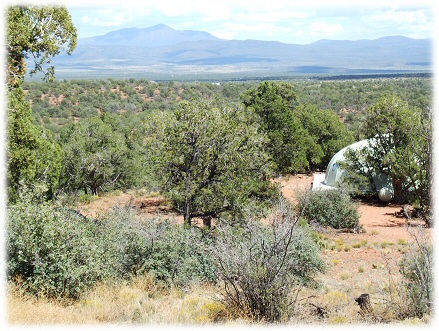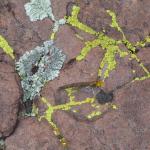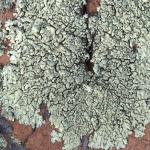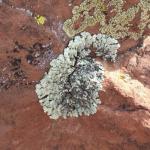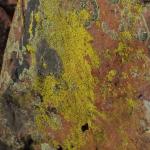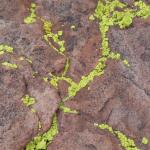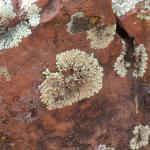Lichens are powerful indicators of air pollution
Lichens consist of two organisms living together in harmony, supporting each other’s needs in order to survive. This is commonly called a symbiotic association. Most of the lichen is composed of fungal filaments, and living amongst the filaments are algal cells, usually arising from a green alga or a cyanobacterium. The fungus part of the lichen provides the alga with water and minerals. The water and minerals are absorbed from the surrounding base support of the lichen. The alga uses the minerals and water to make food. This food supply is also provided for the fungus.
Lichens do not have roots. They are not dependent on constant supplies of water, and can survive on bare rock, sterile soil or sand, and buildings.
Classification and identification of lichens can be a challenge! There are between 13,500 to 17,000 species of lichens. Their locations vary extensively, from the tropics to the polar regions
Many lichens are extremely sensitive to pollutants, expecially sulfur dioxide. Sulfur dioxide is emitted as a result of burning fossil fuels. This sensitivity can be used as indicator of the level of air pollution. For example, refer to a study in the City of Bath, UK.
Regular surveys of lichen populations can also be used to indicate how levels of air pollution can change over years. Since different lichens show different levels of sensitivity to air pollution, the type and quantity of lichens in a given location should be studied to give an overall indicator of the levels of pollution. More information of the differences in sensitivity can be found at www.earthlife.net/lichens/pollution.html
Students at North Chadderton School will be aware of Dr.Overy’s home in Northern Arizona
At a height of over 5,500 feet, the air is relatively clean (and dry!) compared with the cities of Tucson, Phoenix, and even Flagstaff.
Here there are many types of lichens, many of which are located on bare rocks. There are ample opportunities to study these fascinating specimens, in a wonderful, refreshing and healthy climate. In addition to a study of lichens there are ample opportunities to study the microbiotic soil crusts on desert soil in Arizona . Microbiotic crusts consist of compact collections of lichens, mosses, and cyanobacteria! They are essential in stabilising the soil against erosion by wind and water. They are often damaged by footprints, tyres and animals.
More information about Lichens:
The Fungus meets and Alga
Microbial World: Lichens
The Arizona State University Lichen Herbarium
Lichen biology and the environment
Air Quality and Lichens
World of Lichen
Air Quality Monitoring with Lichens

